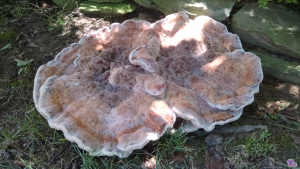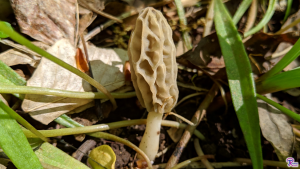#141: Pilobolus spp., the Hat Throwers
Fungi in the genus Pilobolus grow on the dung (they are “coprophilous”) of herbivores and are well-known for their unique spore dispersal mechanism. Using highly specialized spore-bearing hyphae, the fungus can launch globs of spores up to 3m (10ft) away! Its genus name literally means “Hat Thrower,” which is also used as a common name. Another common name is “Shotgun Fungus,” but that can also be applied to Sphaerobolus spp. (FFF#122), so I recommend against using that name.







![#011: Characteristics of Kingdom Fungi [Archived]](https://www.fungusfactfriday.com/wp-content/themes/hueman/assets/front/img/thumb-small-empty.png)


